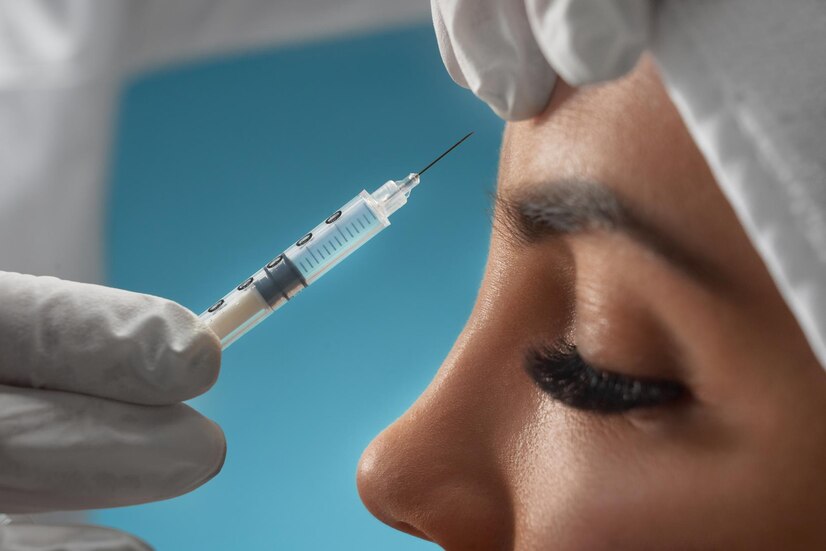Botox for Migraines: A Surprising Treatment

In the realm of medical treatments, there often exists a myriad of unexpected connections and applications. One such intriguing example lies in the realm of migraine management: Botox, commonly known for its cosmetic applications, has emerged as a surprising treatment for chronic migraines.
Beyond its reputation in smoothing wrinkles, Botox injections have shown promise in alleviating the debilitating symptoms associated with chronic migraines, offering a glimmer of hope for those grappling with relentless pain and discomfort. This unconventional repurposing of Botox underscores the complexity of medical science and the ongoing quest to repurpose existing treatments for novel purposes.
As we delve into this unconventional therapy, we unravel the science behind Botox for migraines, exploring its mechanisms of action, efficacy, and potential implications for migraine sufferers worldwide. Join us as we navigate through this unexpected yet promising avenue in migraine management.
Understanding Chronic Migraines: Unraveling the Pain
Chronic migraines are more than just headaches; they’re a complex neurological condition marked by intense, recurring episodes of throbbing head pain, often accompanied by nausea, light and sound sensitivity, and visual disturbances.
Beyond mere discomfort, they profoundly impact daily life, productivity, and mental well-being. Unraveling the multifaceted nature of pain perception involves understanding various factors like genetics, environmental triggers, hormonal fluctuations, and underlying health conditions.
Healthcare professionals aim to delve into the mechanisms behind chronic migraines to offer more targeted treatments addressing the root causes. This pursuit offers hope for improved management and relief for those affected.
The Rise of Botox: From Cosmetic Fix to Migraine Relief
In recent years, Botox has expanded beyond its cosmetic use for wrinkles to become a surprising option for migraine management. Originally FDA-approved for cosmetic purposes, its potential for migraine relief emerged when patients noticed reduced migraine severity during wrinkle treatments.
Further investigation, including clinical trials, led to FDA approval of Botox as a preventive treatment for chronic migraines. This evolution highlights the serendipitous nature of medical breakthroughs and the value of exploring unconventional treatments in healthcare solutions.
Mechanisms Behind Botox: How Does it Work for Migraines?
Botox’s mechanisms in alleviating migraines are still under study, but it’s believed to modulate neurotransmitter release and block pain signals. Derived from Clostridium botulinum, Botox temporarily weakens targeted muscles or nerve endings.
It interferes with neurotransmitters like acetylcholine, glutamate, and substance P, which are involved in pain signaling, potentially reducing nerve cell hyperexcitability and migraine frequency. Additionally, Botox injections may have local anti-inflammatory effects, enhancing its therapeutic benefits in migraine management.
Navigating the Treatment Journey: What to Expect with Botox Injections
Individuals considering Botox for migraines should understand the treatment process for informed decisions. It begins with a thorough evaluation by a healthcare provider to assess suitability and determine injection sites. Botox is injected into specific muscles of the head, neck, and face, targeting migraine-related areas.
The procedure is quick, minimally invasive, often outpatient. While discomfort is possible, it’s generally well-tolerated. Temporary side effects like mild pain or swelling may occur but typically resolve within days. Following post-injection care instructions is crucial to optimize effectiveness and minimize complications.
Efficacy in Action: Exploring the Results of Botox for Migraine Relief
Numerous clinical trials and real-world studies have demonstrated the efficacy of Botox in reducing the frequency, duration, and severity of migraine attacks in patients with chronic migraines. While individual responses to Botox treatment may vary, many individuals experience significant improvements in migraine symptoms following a series of injections.
The onset of therapeutic effects may take several weeks to manifest, with peak efficacy typically reached within the first few months of treatment. Some patients may require multiple treatment sessions to achieve optimal results, as the effects of Botox are temporary and typically last for about three to six months.
Regular maintenance injections are often recommended to sustain the benefits of treatment over time. Overall, the efficacy of Botox in migraine management highlights its potential as a valuable addition to the therapeutic arsenal for chronic migraine sufferers.
Unveiling the Science: Research Insights into Botox for Migraines
In understanding Botox’s role in migraine management, researchers have uncovered key insights shaping its effectiveness. Here’s a glimpse into the latest findings driving this field forward:
- Neurotransmitter Modulation: Studies suggest that Botox interferes with the release of neurotransmitters involved in pain signaling, such as acetylcholine, glutamate, and substance P, thereby dampening the hyperexcitability of nerve cells.
- Muscle Relaxation: Botox’s ability to temporarily paralyze or weaken targeted muscles may help alleviate tension and reduce migraine triggers associated with muscle tension.
- Anti-inflammatory Effects: Evidence indicates that Botox injections may exert local anti-inflammatory effects, potentially reducing inflammation in the nerves and surrounding tissues implicated in migraine pathophysiology.
- Neuroprotective Properties: Emerging research suggests that Botox may possess neuroprotective properties, safeguarding nerve cells from damage and promoting their survival, which could have implications for long-term migraine management.
- Personalized Treatment Approaches: Ongoing studies aim to identify biomarkers that may predict individual response to Botox treatment, paving the way for personalized therapeutic strategies tailored to each patient’s unique needs.
By supporting ongoing research efforts, we can contribute to improved outcomes and better quality of life for migraine sufferers worldwide.
Safety Matters: Assessing Risks and Benefits of Botox Treatment
While Botox is generally considered safe and well-tolerated when administered by qualified healthcare professionals, it’s important for patients to be aware of potential risks and side effects associated with treatment. Common side effects of Botox injections for migraines may include temporary pain, swelling, bruising, or redness at the injection sites.
In rare cases, more serious adverse reactions such as muscle weakness, difficulty swallowing or breathing, or allergic reactions may occur, requiring prompt medical attention. Additionally, Botox injections should be avoided during pregnancy or breastfeeding, as the safety of Botox in these populations has not been established.
Before undergoing Botox treatment, patients should discuss their medical history, current medications, and any concerns or questions with their healthcare provider to ensure that the benefits outweigh the risks and that treatment is appropriate for their individual circumstances.
Beyond the Surface: Impact on Quality of Life Beyond Pain Relief
The impact of chronic migraines extends far beyond the physical pain and discomfort associated with migraine attacks. It affects various aspects of daily life and overall quality of life. While pain relief is crucial, addressing the broader impacts can significantly improve well-being.
- Improved mood: Botox therapy may lead to enhancements in mood, contributing to a more positive outlook and greater resilience in coping with chronic migraines.
- Enhanced sleep quality: Relief from migraine symptoms can result in better sleep patterns, leading to improved overall health and vitality.
- Increased productivity: By reducing the frequency and severity of migraine attacks, individuals can regain productivity and efficiency in their daily activities.
- Alleviated social and occupational disruptions: Botox treatment can mitigate the burden of missed work or social engagements, allowing for a more fulfilling and balanced lifestyle.
- Boosted self-confidence: Psychological benefits such as increased self-confidence and self-esteem accompany successful migraine management, enhancing overall well-being.
In addressing these broader impacts, Botox therapy for migraines offers not only relief from pain but also the opportunity for individuals to reclaim control over their lives and pursue their goals with renewed vigor and confidence.
Addressing Concerns: Common Misconceptions About Botox for Migraines
Despite its proven efficacy and safety profile, Botox therapy for migraines is still surrounded by misconceptions and stigma that may deter some individuals from seeking treatment. One common misconception is that Botox is only suitable for cosmetic purposes and cannot effectively treat medical conditions such as migraines.
In reality, Botox has been FDA-approved for the prevention of chronic migraines since 2010 and has undergone rigorous testing to establish its efficacy and safety in this indication. Another misconception is that Botox treatment for migraines will result in a frozen or unnatural appearance, similar to cosmetic Botox injections.
However, when administered for migraines, Botox is typically delivered at lower doses and targeted to specific muscles involved in migraine pathophysiology, minimizing the risk of cosmetic side effects. By addressing these misconceptions and providing accurate information, healthcare providers can empower patients to make informed decisions about their migraine treatment options and overcome barriers to accessing care.
The Future Landscape: Evolving Perspectives and Advancements in Botox Therapy
The future of Botox therapy is set for groundbreaking advancements and evolving perspectives in migraine management. With innovative delivery methods and advances in neuroimaging, tailored approaches to Botox treatment are on the horizon. Efforts to destigmatize Botox therapy and expand access promise to improve outcomes for migraine sufferers.
- Innovative Delivery Methods: Microneedle patches and nanoparticles enhance Botox therapy convenience.
- Advances in Neuroimaging: New insights from neuroimaging refine Botox treatment approaches.
- Tailored Approaches: Botox therapy becomes increasingly personalized to patient needs.
- Destigmatization Efforts: Awareness efforts aim to destigmatize Botox therapy for migraines.
- Expanded Access: Growing acceptance grants more individuals access to Botox therapy.
The future of Botox therapy holds immense promise for improved outcomes in migraine management. With ongoing advancements and a shift in perspectives, we’re heading towards a future where Botox therapy is more accessible and effective for all.
The journey through understanding chronic migraines and exploring Botox as a surprising treatment option has shed light on the complexities of migraine management. From unraveling the pain to delving into the mechanisms behind Botox’s efficacy, it’s evident that this therapy offers hope for relief and improved quality of life for chronic migraine sufferers.
The journey through understanding chronic migraines and exploring Botox as a surprising treatment option has shed light on the complexities of migraine management. From unraveling the pain to delving into the mechanisms behind Botox’s efficacy, it’s evident that this therapy offers hope for relief and improved quality of life for chronic migraine sufferers.
As we continue to navigate the evolving landscape of migraine treatment, it’s crucial to support ongoing research efforts and destigmatize Botox therapy, ensuring that individuals have access to effective and personalized care. If you or someone you know is struggling with chronic migraines, consider exploring Botox therapy as a potential treatment option.
Contact American Laser Med Spa at Corpus Christi to learn more about our services and schedule a consultation. Remember, relief from migraines is within reach, and taking proactive steps towards managing your symptoms can lead to a brighter, pain-free future.







